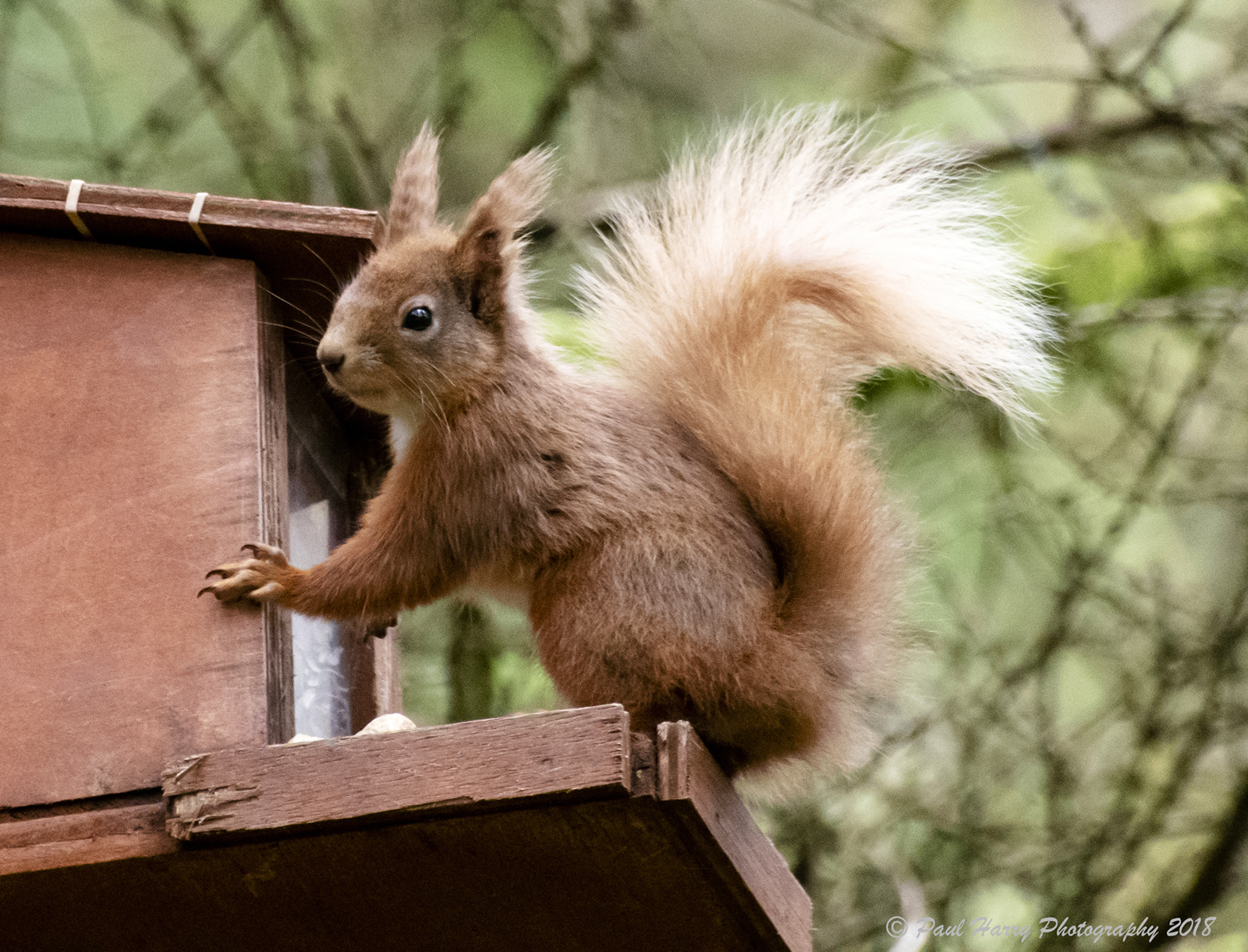New Kit on the Block
An exciting new development for the red squirrel project in mid Wales!
Evidence from red squirrel hairs has provided positive news about the condition of these iconic creatures in mid Wales! After collecting and analysing red squirrel hair samples from one of the Mid Wales Red Squirrel Project’s (MWRSP) squirrel feeding stations, we have found a unique DNA sequence that hasn’t ever been found anywhere else in the world. The Wildlife Trust of South and West Wales are thrilled to report this exciting new finding!
The Wildlife Trust’s Red Squirrel Officer, Becky Hulme works with a team of dedicated volunteers to track down and monitor red squirrels in mid Wales. A Project volunteer had attached a sticky pad beneath the lid of a popular feeder box located above Llanddewi Brefi; a rural village in Ceredigion. This feeder box contained seeds and nuts, food for red squirrels. In spring 2018 we had seen a whopping 5 red squirrels making good use of its contents, all of which was captured on our trail camera along with some cheeky mating behaviour. Lucky for us, the sticky pad provided us with a few hair samples from the reds which we then sent away to undergo analysis of genetic haplotype.
What’s a Haplotype?
Haplotype is a genetic marker, a DNA sequence that can help us to understand the genetic make-up and ancestry of an animal. Put simply, haplotype is a close-knit group of genes which an offspring inherits from one parent.
Results from these hair samples in mid Wales revealed two different haplotypes. One was already known in Wales, but the other was unique and hasn’t been recorded anywhere before! This adds a fifth haplotype to the four already identified in the mid Wales red squirrel population.
What does this mean for Red Squirrels and their conservation?
Firstly, it means that the work our team are doing to help maintain and improve the habitat for red squirrels in mid Wales is incredibly important. This evidence also tells us that the red squirrels in mid Wales have a high level of genetic diversity. This means that our conservation work and efforts are more likely to be successful because having a diverse gene pool helps populations to adapt to changing environments. With more variation, it is more likely that some red squirrels in mid Wales will have variations in their genes which are suited to the environment. These individuals are also more likely to survive and produce kits (baby squirrels) that will also have these beneficial genes. All music to the ears of the project staff and volunteers! Our fingers are crossed that we have some new kits in mid Wales come spring next year.
Becky Hulme remarked: “We are delighted to have found yet another haplotype present in red squirrels in the mid Wales forests. The analysis suggests that mid Wales forests are an important site for the conservation of British red squirrels”. She added “without the massive time-commitment, initiative and dedication of survey volunteers, none of this data could have been recorded”.
What’s next?
The information and research that we undertake as part of the MWRSP is vital for improving conditions for red squirrels. Research evidence helps us to better understand where our conservation efforts need to be focused. We can also use this information to encourage other Project participants such as land owners, Natural Resources Wales and the Welsh Government about how we can all work towards conservation goals to benefit wildlife.
But it may be that this discovery is bitter sweet. The MWRSP is coming to the end of its five year funding stream, which means that work to help the red squirrels in mid Wales may stop if we can’t find the funds to continue.
To continue to stage 2 of the project, The Wildlife Trust of South and West Wales needs to raise £110,000 to fund work on the ground over the next 2 years. This will ensure that we can continue to maintain and enhance habitats for red squirrels, but also expand our team to restore some key areas that could be improved to make them more suitable for red squirrels. We’re also keen to investigate and develop innovative monitoring techniques to-track red squirrels which will provide useful information to feed into future forest management plans.
Red squirrels numbers in the UK have fallen from around 3.5 million in the 1870’s to between 120,000 and 140,000 individuals today (according to different estimates). We’re finally seeing positive results with more and more sightings of red squirrels in mid Wales, but it is vital that we continue to encourage and protect these iconic native animals.
How can you get involved?
There are many different ways in which you can help! We’re always on the look out for more volunteers and of course funding and kind donations. We are hoping to raise the £110,000 needed to continue and expand this project through grants, Trust funds and individual donors like you who want to see red squirrels thrive in mid Wales. If any of these are you, please email Becky on [email protected] or contact us on 01656 724100 to kindly donate. For more information please visit…



